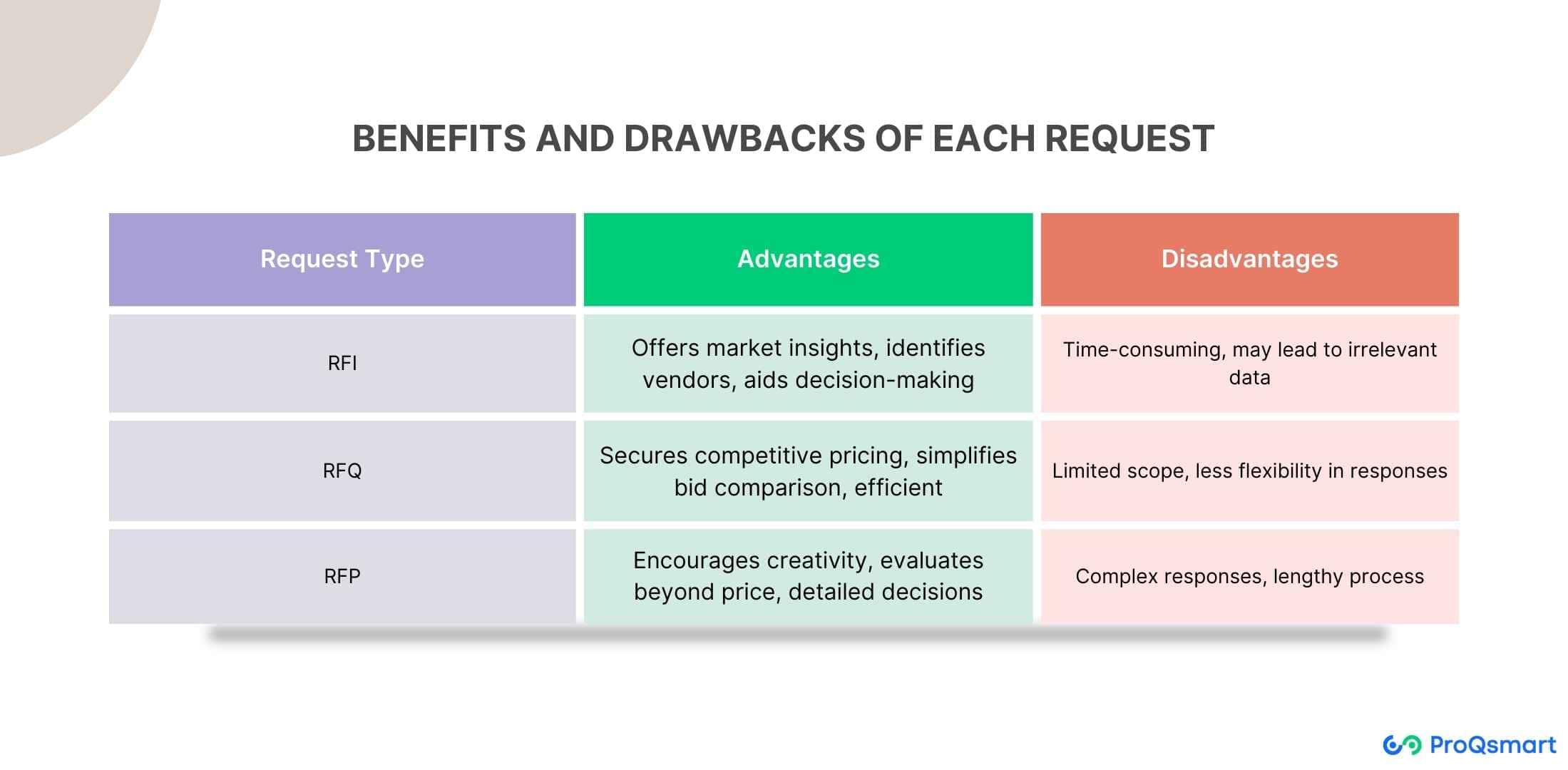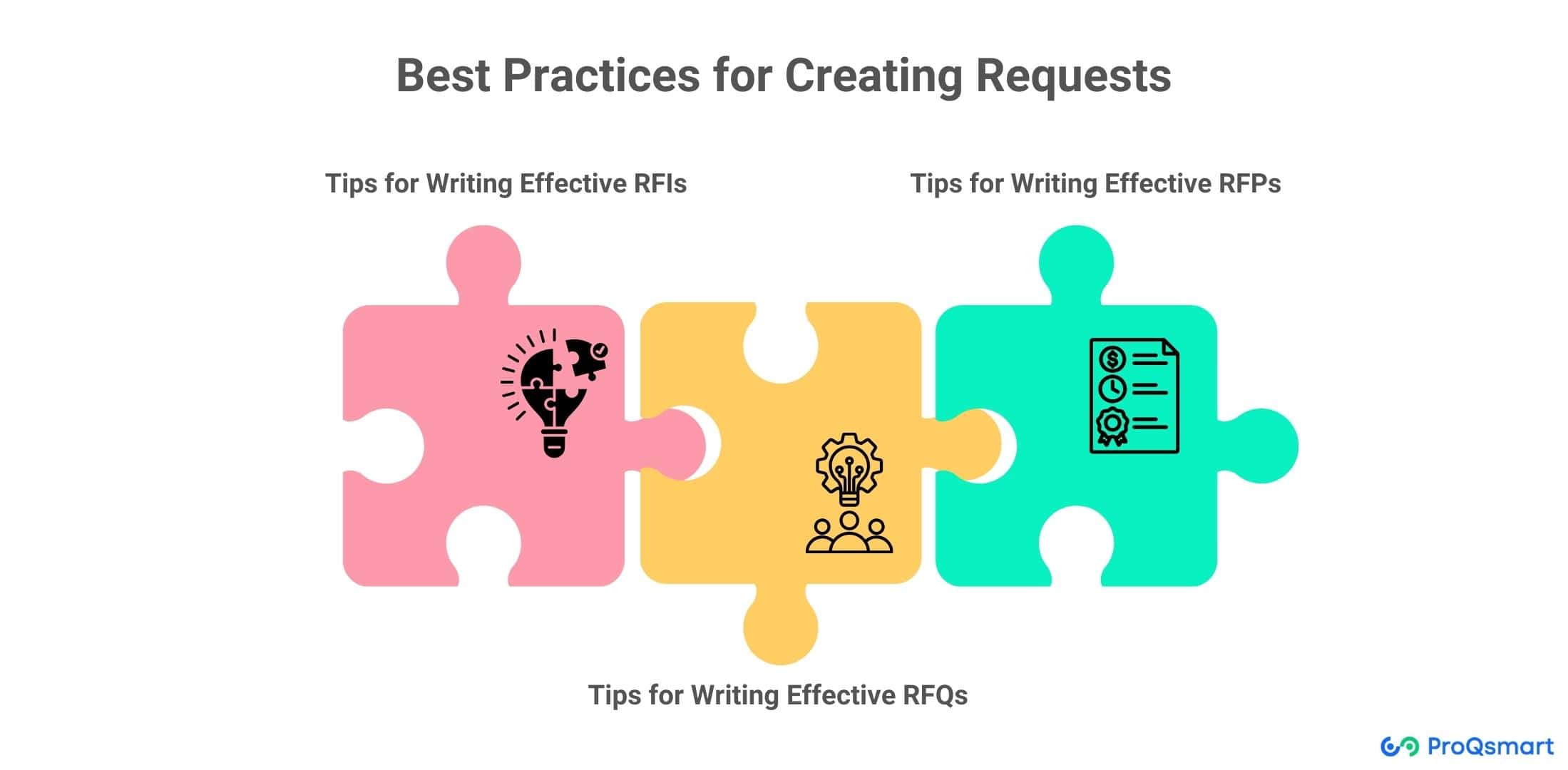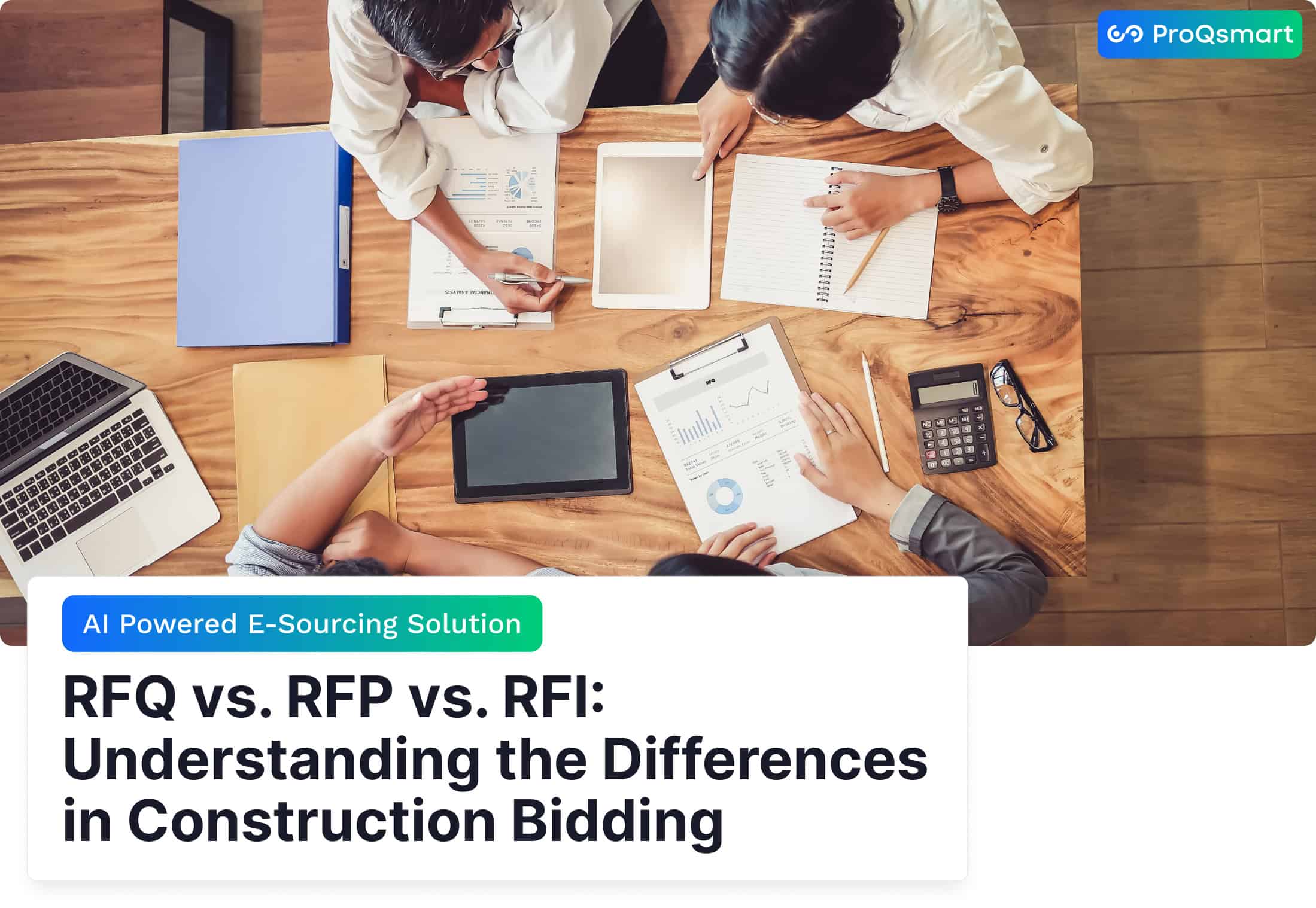Navigating construction bids can feel like a maze. RFQ, RFP, and RFI each play key roles in this process. Knowing when to use each one saves time and resources.
RFQ, or Request for Quotation, is primarily focused on obtaining cost details. In contrast, RFP, or Request for Proposal, seeks creative solutions from potential contractors. Meanwhile, RFI, or Request for Information, is used to gather essential data about a project.
Choosing the right method is crucial to streamline your process. Each approach offers unique benefits and challenges. For instance, RFQs concentrate on price, while RFPs evaluate creativity and innovation. RFIs are particularly useful for clarifying doubts and gathering additional information.
To craft effective requests, it’s important to follow best practices. Setting clear goals and defining precise needs will significantly enhance your chances of success.
Optimizing your solicitation approach is essential. Tailoring each request to fit the specific requirements of your project can drive efficiency in construction procurement.
Leading with expertise and insight will help simplify complex ideas for better understanding among all stakeholders involved.
Key Takeaways
- Understanding the distinct purposes of RFIs, RFQs, and RFPs is key to effective procurement. Each type plays its own unique role in the buying process. RFIs gather general information, RFQs ask for specific pricing, and RFPs look for curated proposals.
- Selecting the right request type—RFI vs. RFQ vs. RFP—can streamline the procurement process. This allows you to gather the key information and proposals to make efficient, smart decisions.
- Properly leveraging RFIs clarifies market capabilities and vendor offerings. This way, you can get a high-level overview of what’s out there and potential vendors without investing in a purchase.
- RFQs work well when you know exactly what you want. They make it simple to shop around for prices and negotiate from multiple suppliers.
- Use RFPs when you want detailed proposals from vendors. This approach works particularly well for complex projects where careful consideration of solution approaches, expertise, and innovation is required.
- You define clear objectives and evaluation methods when you apply best practices to creating these requests. The process ensures quality responses and ensures you select the best vendor for your business.
What Are RFIs, RFQs, and RFPs?
An in-depth understanding of RFIs, RFQs, and RFPs is essential in the procurement process. These tools allow buyers to communicate efficiently with prospective suppliers and make informed decisions. Each one plays its own unique role in the supplier selection process, ensuring better outcomes in any project.
Definition of an RFI
An RFI, or Request for Information, is like the first step in getting to know potential vendors. It’s a tool we use to gather broad details about what suppliers can offer. Think of it as a way to explore different options without diving into specifics like costs.
For instance, if we’re considering a new software for our company, an RFI allows us to understand what features different vendors provide. It helps us see who might meet our needs before we start talking numbers.
Using RFIs early in the procurement journey is crucial. It sets the stage for more detailed requests like RFQs and RFPs, helping us make smarter choices later on.
Definition of an RFQ
An RFQ, or Request for Quotation, focuses on pricing. This document is crucial when we know what we need the project to accomplish. It helps us figure out the cost to get what we want.
For example, imagine we know exactly what type of office furniture we need, including the color and the size. An RFQ allows you to collect price quotes from multiple suppliers so you can compare and select the best offer.
This step is critical to locking in a competitive price, ensuring we get the best deal possible. Since RFQs focus on specifics, we know exactly how to budget and make our purchases.
"Now you don’t have to worry about drafting your RFQ! We’ve got you covered with our customizable RFQ template. Download it today and simplify your procurement process with ease!"
Definition of an RFP
An RFP, or Request for Proposal, invites vendors to present detailed plans on how they can meet our project’s needs. It’s more than just about costs. We encourage suppliers to offer creative solutions that align with what we’re aiming to achieve.
For example, if we’re launching a new marketing campaign, an RFP would ask potential agencies to outline their strategies, timelines, and costs. This comprehensive approach helps us evaluate vendors on various factors beyond pricing, like their creativity and ability to deliver results.
RFPs are essential in making thorough assessments, choosing vendors who not only fit our budget but also share our vision and goals.
“Well-structured RFPs have a lot to recommend them. They lead to better project outcomes, better alignment with project goals, and a greater likelihood that the most qualified contractor is selected”.
Download Editable RFP Template for your industry!
Key Differences Between RFIs, RFQs, and RFPs

To make it more manageable to understand the complicated world of procurement requests, let’s explore the primary differences between RFIs, RFQs, and the RFP process. Here’s a table that sums up their purpose, timing, and detail level.
Request Type | Purpose | Timing | Detail Level |
RFI | Gather information | Initial stage | Low |
RFQ | Obtain pricing | Mid-stage | Moderate |
RFP | Evaluate proposals | Later stage | High |
Purpose and Function
RFIs, RFQs, and RFPs all have different functions when it comes to procurement.
You may envision an RFI, or the Request for Information, as a way to collect general information. It’s like asking vendors to help you understand what’s available in the market.
Then, there’s the RFQ, or Request for Quote, which is about price. You use this option when you’ve decided what you want to buy. It enables you to hunt down the best deal out there.
Finally, last is an RFP, or Request for Proposal, which is when you’re asking for more detailed proposals to review. This is where you invite vendors to pitch you their specific solutions, usually including an implementation plan.
Each of these documents plays a significant part in deciding which vendors to choose. RFIs help you filter through your options and establish a lay of the land. RFQs allow you to compare costs directly. RFPs give you a comprehensive picture of how vendors plan to serve your needs.
These requests aren’t just paperwork—they’re strategic tools that bring you closer to achieving your business goals.
Timing and Sequence
The order you use RFIs, RFQs, and RFPs is important. Here’s a typical sequence:
- Use this first to gather information and understand the market.
- Follow up with this to get pricing from selected vendors.
- Finally, use this to evaluate comprehensive proposals from shortlisted vendors.
It’s all about getting the timing right. Using RFIs early allows you to establish a strong knowledge base. Then, RFQs let you focus on price after you have a general shape.
RFPs come into play when you’re ready to dive deep into vendor proposals. Proper sequencing makes the procurement process smooth and efficient.
Level of Detail Required
The level of detail varies across RFIs, RFQs, and RFPs. RFIs require the least amount of detail. You may just prompt vendors to explain their capabilities or general information about products.
RFQs require more details; for example, you need to be specific and include exact quantities, so vendors can provide you with precise quotes. RFPs require the most detail. There, you’ll define exactly what you need and request that vendors submit full proposals, complete with plans and timelines.
How detailed you get impacts vendor responses. With RFIs, you’ll get high-level overviews. RFQs produce simple price lists. RFPs, however, include detailed proposals that must be carefully reviewed.
For example, an office supply RFI will ask prospective vendors to provide a catalog. An RFQ requests prices for specific items, while an RFP invites vendors to propose a comprehensive supply chain solution.
When to Use RFIs, RFQs, and RFPs
Appropriate Use of an RFI
A strong way to use an RFI is when you’re just beginning. It gives you a bird’s-eye view of what’s out there in the marketplace. You may consider using an RFI when you’re researching various vendors and their offerings.
You’re building a greenfield project and need to investigate various technologies and services. Get out there and start collecting all the information you can get! An RFI allows you to ask for key information without getting into the nitty-gritty details.
RFIs are useful when you’re defining project requirements. They let you understand market trends and test out potential solutions. Think of it as casting a wide net to learn more about what’s out there.
This is particularly useful for projects where the scope isn’t completely defined yet. Send out an RFI to get vendor expertise. These people know their stuff, and their valuable feedback can shape your project in meaningful ways.
RFIs help you build relationships with potential vendors. When you reach out to several suppliers, you start a dialogue and set the stage for future deals. They help vendors understand your needs early on and position you as a proactive partner in the process.
Appropriate Use of an RFQ
When you know exactly what you need, you can confidently use an RFQ, or Request for Quotation, during the procurement process. It becomes your indispensable weapon for scoring the best deals, particularly useful for buyers seeking specific goods. It’s best for situations where the specs are relatively set, and you’re just looking for the cost.
If you’re trying to purchase a specific product or service, an RFQ can assist. It allows you to compare prices directly based on your set parameters. RFQs shine for projects with very tight budget constraints where costs are paramount.
For example, let’s say you’re sourcing commodities such as office supplies or equipment. An RFQ simplifies the process by focusing on pricing so that you can easily compare proposals between multiple vendors. It’s about getting the most bang for your buck.
Efficiency is another hallmark of the RFQ process. It simplifies procurement because you can evaluate vendors based on cost. This method reduces the time you spend on complex evaluations, which is especially useful if time is short.
You can make a fast, smart purchase decision with an RFQ.
Appropriate Use of an RFP
If you’re dealing with a more complicated project, an RFP, or Request for Proposal, is your best bet. This formal procurement process works in situations where you require prospective vendors to provide detailed proposals. If you’re working on a large-scale IT project, an RFP allows vendors to highlight their top solutions while ensuring they meet your specific needs.
In this sourcing process, they make sure they serve your needs precisely. RFPs encourage innovation and creativity, making them ideal for projects that require outside-the-box thinking.
You need vendors who can break the mold and innovate. By outlining your business requirements and challenges, you empower vendors to suggest new strategies and methodologies tailored to your project.
The importance of RFPs is that they allow for a thorough vendor evaluation. They also make it easy to evaluate a vendor’s capabilities, experience, and problem-solving approach.
This comprehensive assessment is essential for projects that require more than just a one-size-fits-all solution. It makes it easier to select the right partner for the job.
Benefits and Drawbacks of Each Request

Request Type | Advantages | Disadvantages |
RFI | Offers market insights, identifies vendors, aids decision-making | Time-consuming, may lead to irrelevant data |
RFQ | Secures competitive pricing, simplifies bid comparison, efficient | Limited scope, less flexibility in responses |
RFP | Encourages creativity, evaluates beyond price, detailed decisions | Complex responses, lengthy process |
Advantages of Using RFIs
RFIs, or Requests for Information, stand out by providing valuable insights into the market landscape. They help you understand what potential suppliers offer and how they position themselves. This information is key in the early stages of procurement.
For example, if you’re looking for a new software solution, an RFI can reveal which vendors specialize in the exact features you need. Through this, you can identify promising vendors early, setting the stage for successful procurement.
RFIs also gather diverse options, enabling more informed decision-making by showcasing a wide range of possibilities. This comprehensive view is crucial to selecting the most suitable vendors and solutions.
Advantages of Using RFQs
RFQs, or Requests for Quotation, are great for locking in the lowest prices on defined needs. RFQs offer clarity when you know exactly what you need, such as specific quantities or technical specifications. They make it easy to compare vendor bids and select the most compelling offer.
In the construction field, RFQs can be used to provide cost comparisons of materials such as cement or steel. This process automates the decision-making, making the work of procurement more efficient and faster.
By prioritizing cost, RFQs streamline the procurement process, shortening the decision time while ensuring the best financial results.
Advantages of Using RFPs
RFPs, or Requests for Proposal, encourage vendors to present creative solutions tailored to your needs. This is especially useful in scenarios where innovation and flexibility are crucial, such as when developing a custom software application.
RFPs allow for a comprehensive evaluation of vendors based on various factors beyond price, such as technical expertise, implementation plans, and support services. This multi-faceted approach leads to well-rounded decision-making.
For example, selecting an IT service provider through an RFP ensures you consider service quality and customer support, not just cost. Detailed proposals from RFPs enable informed decisions, providing a clear picture of what vendors can deliver.
Limitations and Challenges
Each request type comes with its own set of challenges. RFIs can become overwhelming if the data gathered is irrelevant or too extensive. RFQs might lack flexibility, limiting options to fixed specifications.
RFPs, while thorough, often involve complex responses and longer timelines. These challenges underline the importance of clarity and specificity in requests.
For instance, a vague RFP can lead to proposals that miss the mark. Clear, detailed requests help mitigate these issues, ensuring that vendor responses align closely with project needs and objectives.
Best Practices for Creating Requests

When it comes to collecting insight from prospective suppliers, the RFI, RFQ, and RFP processes are the way to go. These indispensable tools enable organizations to make informed procurement requests and secure the best offers. Let’s take a look at how you can create these documents effectively to serve your business requirements.
Tips for Writing Effective RFIs
In an RFI, it’s crucial to state your project’s objectives and needs. This helps vendors understand what you’re looking for and saves time for everyone involved. For example, if you’re investigating new software solutions, describe the essential functions you’re looking for.
Tailor your questions to get the insights you need about vendor capabilities. If you’re looking for a supplier for a new component, ask them how many they can produce. Additionally, inquire about lead times and quality control processes. This will help sort out vendors who are not right for you.
A well-structured RFI is easy to navigate. Use headings and bullet points to make it easy for vendors to find the information they need. This organization not only assists vendors but also helps your team efficiently review responses.
Tips for Writing Effective RFQs
An RFQ should include precise details about what you’re buying and how much you’re willing to pay. If you’re sourcing hardware, list the specs and ask for itemized pricing. This will ensure you receive comparable quotes and can make informed decisions.
Make sure the RFQ has straightforward payment terms and clear submission instructions. This reduces misunderstandings and helps vendors provide accurate quotes. For instance, make it clear if you need to pay in installments or upon delivery.
Define a structured process for how you want the vendors to respond. This may involve a particular format or a way of structuring a document that you want. Such clarity helps vendors and makes your evaluation process more streamlined.
"Now you don’t have to worry about drafting your RFQ! We’ve got you covered with our customizable RFQ template. Download it today and simplify your procurement process with ease!"
Tips for Writing Effective RFPs
An RFP should clearly describe your project’s goals and requirements. This thorough process ensures vendors have insight into the project scope, which can assist them in shaping their proposals. For example, if you’re running a marketing campaign, describe your ideal customers and what you hope to achieve.
Provide specific guidelines on how proposals should be submitted. This may involve format, deadline, and any necessary supporting documents. It creates uniformity and helps make it easier to compare proposals.
Clearly state how you’ll evaluate proposals. This may include criteria such as cost, vendor experience, and technical capabilities. By establishing these criteria, you will be able to steer vendors toward proposals that fit your understanding better and make your decision-making process much easier.
“Well-structured RFPs have a lot to recommend them. They lead to better project outcomes, better alignment with project goals, and a greater likelihood that the most qualified contractor is selected”.
Download Editable RFP Template for your industry!
Importance of Choosing the Right Request Type

Knowing the differences between RFQ, RFP, and RFI can change the entire trajectory of a project. When you lead a project, how you choose the request type matters greatly. It’s a little bit like charting the course of a ship.
An RFQ (Request for Quotation) is when you know exactly what you want and want pricing. It’s like asking how much a specific tool is when you already know what you want.
An RFP, or Request for Proposal, invites vendors to propose solutions for your problem. This approach allows creativity and innovation to flourish. It’s like saying to a chef, “Surprise me with a dish based on these ingredients.
An RFI (Request for Information) gathers general information about prospective solutions. It’s kind of like looking at a menu before you decide what to order.
Simply putting the right selection of request type sets you on the road to successful project outcomes. It ensures that vendor capabilities align perfectly with your project’s needs from the very start.
Impact on Project Success
Selecting the right request type can make or break the project. A well-crafted RFP can lead to innovative solutions, getting vendors to the table with their best ideas. When a tech company goes out looking for a new software provider, they issue an open-ended RFP.
This approach allows vendors to tailor their proposals to the company’s specific business challenges. It encourages better partnerships because vendors become partners instead of mere suppliers. This means those requests are aligned with business goals, so every one you propose is relevant and impactful.
For example, a non-profit uses an RFQ to buy office supplies. By clearly defining their needs, they not only secure competitive pricing but also establish a reliable supply chain partner. This alignment to business objectives allows me to deliver the best possible projects at the best possible price and quality.
Efficiency in Procurement Processes
The right request type is key to streamlining procurement efforts. An RFQ, for example, simplifies the comparison of prices and terms when the requirements are clear and specific. This straightforward approach saves time and resources, as decision-makers can quickly evaluate bids based on a consistent set of criteria.
By contrast, an RFP might be more suitable when the project requires a detailed analysis of vendor capabilities and solutions. This document invites comprehensive proposals, allowing procurement teams to assess not just cost but also vendor expertise and innovation.
RFIs serve as a preliminary step to gather information, helping organizations understand the market landscape before committing to an RFQ or RFP. By strategically using RFIs, RFQs, and RFPs, procurement teams enhance overall efficiency.
This targeted approach ensures that resources are allocated wisely, speeding up the vendor selection process and leading to better results.
Conclusion
Wrapping up, understanding RFIs, RFQs, and RFPs can step up your game in business. These requests shape the way you get information, quotes, and proposals. Each type has its own role. RFIs gather info, RFQs seek costs, and RFPs look for solutions. Using the right one boosts efficiency and decision-making. Avoid picking the wrong type. It can slow down the process and lead to misunderstandings.
To avoid these pitfalls and streamline your procurement efforts, consider leveraging ProQsmart. Our platform simplifies the management of RFIs, RFQs, and RFPs, helping you optimize your processes and achieve better results.
Ready to elevate your procurement game? Book a demo with ProQsmart today and discover how our solutions can transform your approach to managing requests and enhance your overall efficiency!
FAQs
What are the main differences between RFIs, RFQs, and RFPs?
RFIs collect information for supplier vetting processes, RFQs request pricing details from multiple vendors, and RFPs seek detailed proposals to meet specific business requirements in procurement.
When should I use an RFI?
Use an RFI during the procurement process when you require additional information regarding a product or service. It assists in understanding supplier capabilities and potential solutions ahead of making a purchase or collaboration.
What is an RFQ's primary benefit?
The main benefit of an RFQ is cost comparison, allowing you to collect and compare highly detailed pricing from multiple vendors, which aids in managing your budget and ensuring procurement readiness.
Why is selecting the right request type crucial?
The right request types preserve your time and sanity. It simplifies communication with the vendors and is in line with your procurement objectives, minimizing misunderstandings and saving time.
How do RFIs, RFQs, and RFPs benefit procurement?
Each request type, such as RFIs and RFPs, aids buyers in making informed decisions, elevating the procurement strategy through a detailed RFP process and comprehensive proposals.
What are best practices for creating RFIs, RFQs, and RFPs?
Set specific goals and send procurement requests with clear information, ensuring your deadlines are realistic. Tailor your requests to your business requirements, allowing prospective vendors to respond accurately and effectively.
What are the drawbacks of using RFQs?
RFQs may place too much emphasis on price. This can ignore other important factors such as quality or service. Don’t fail to balance cost with other vendor selection criteria.






